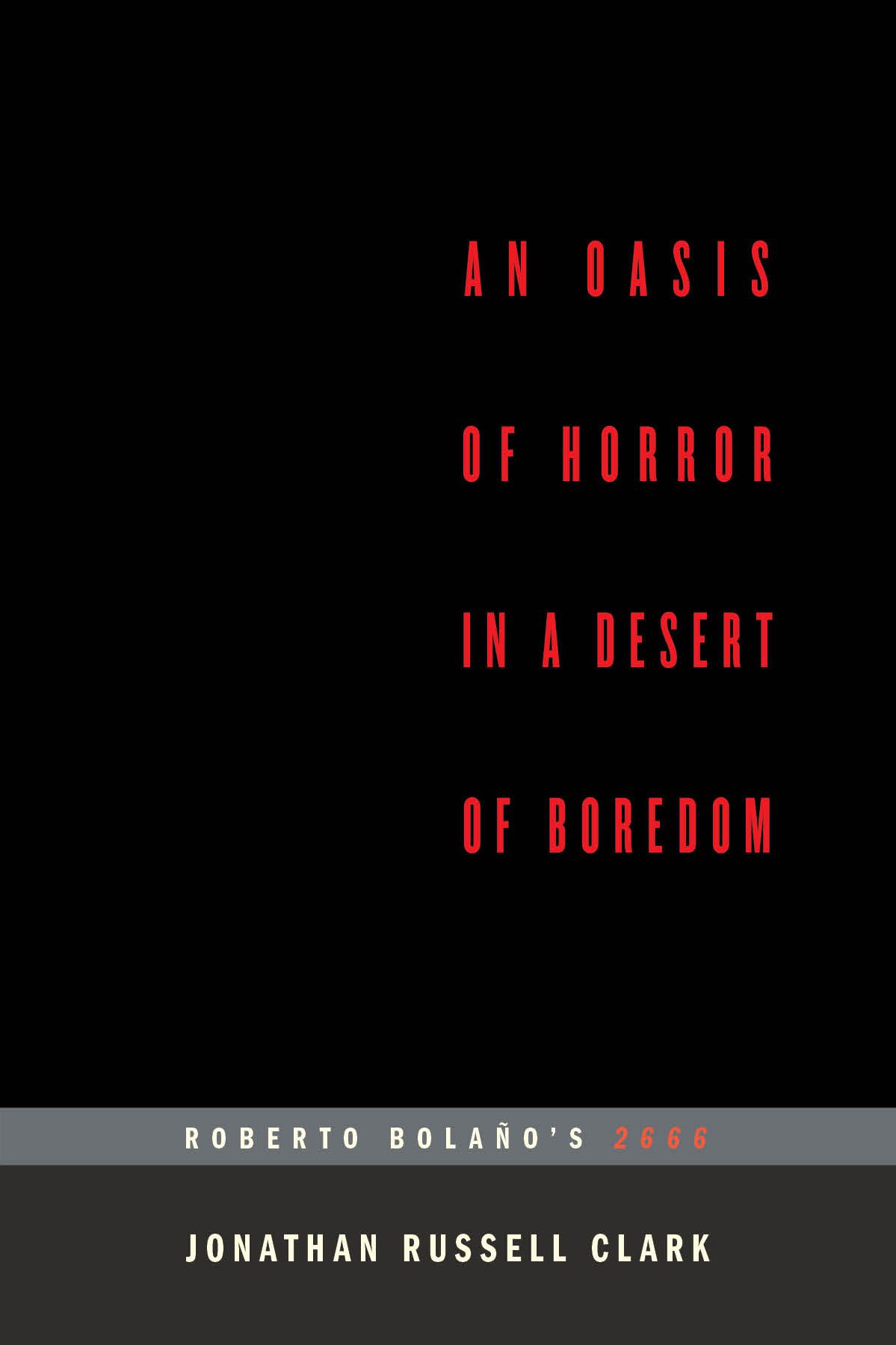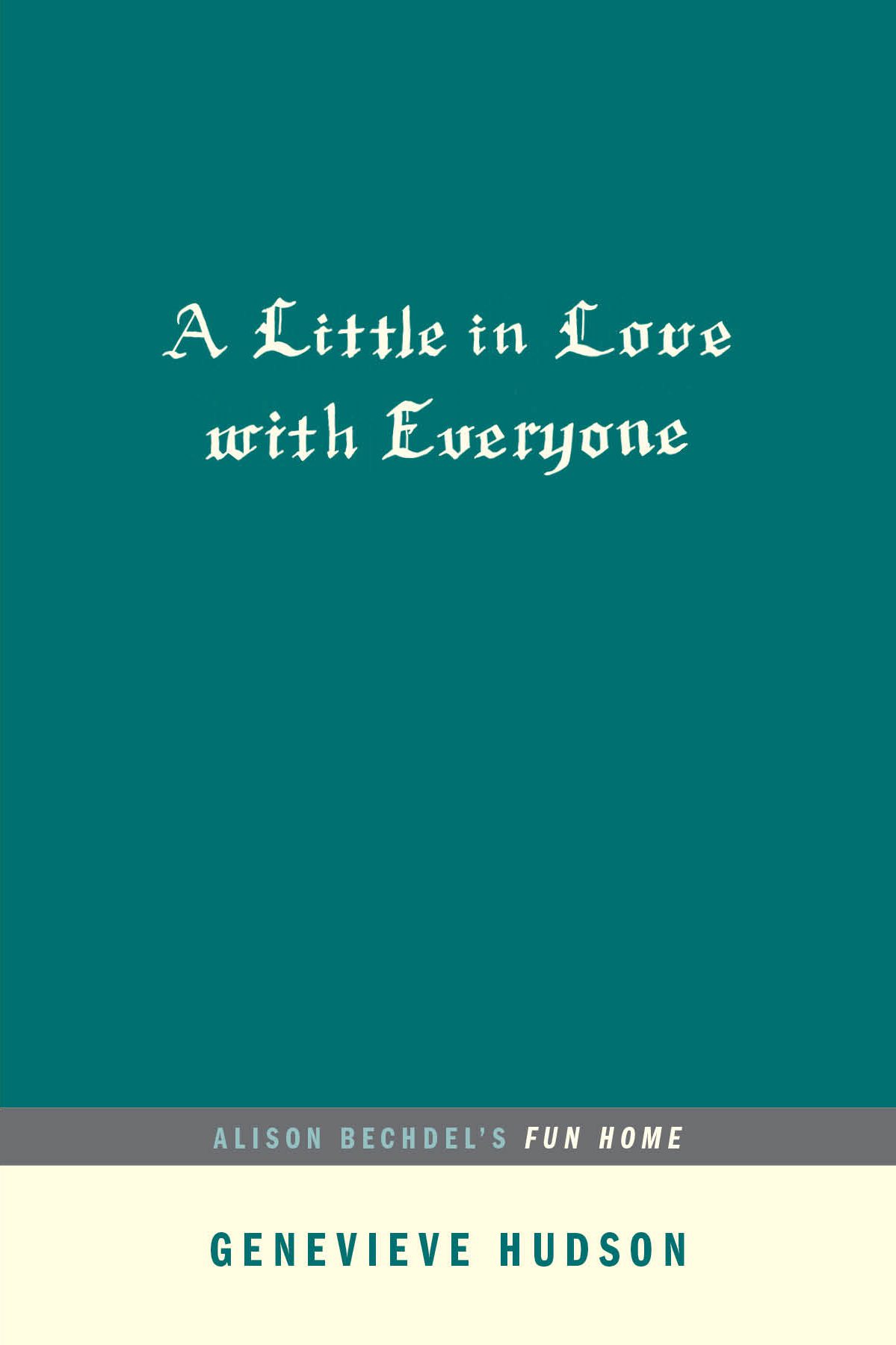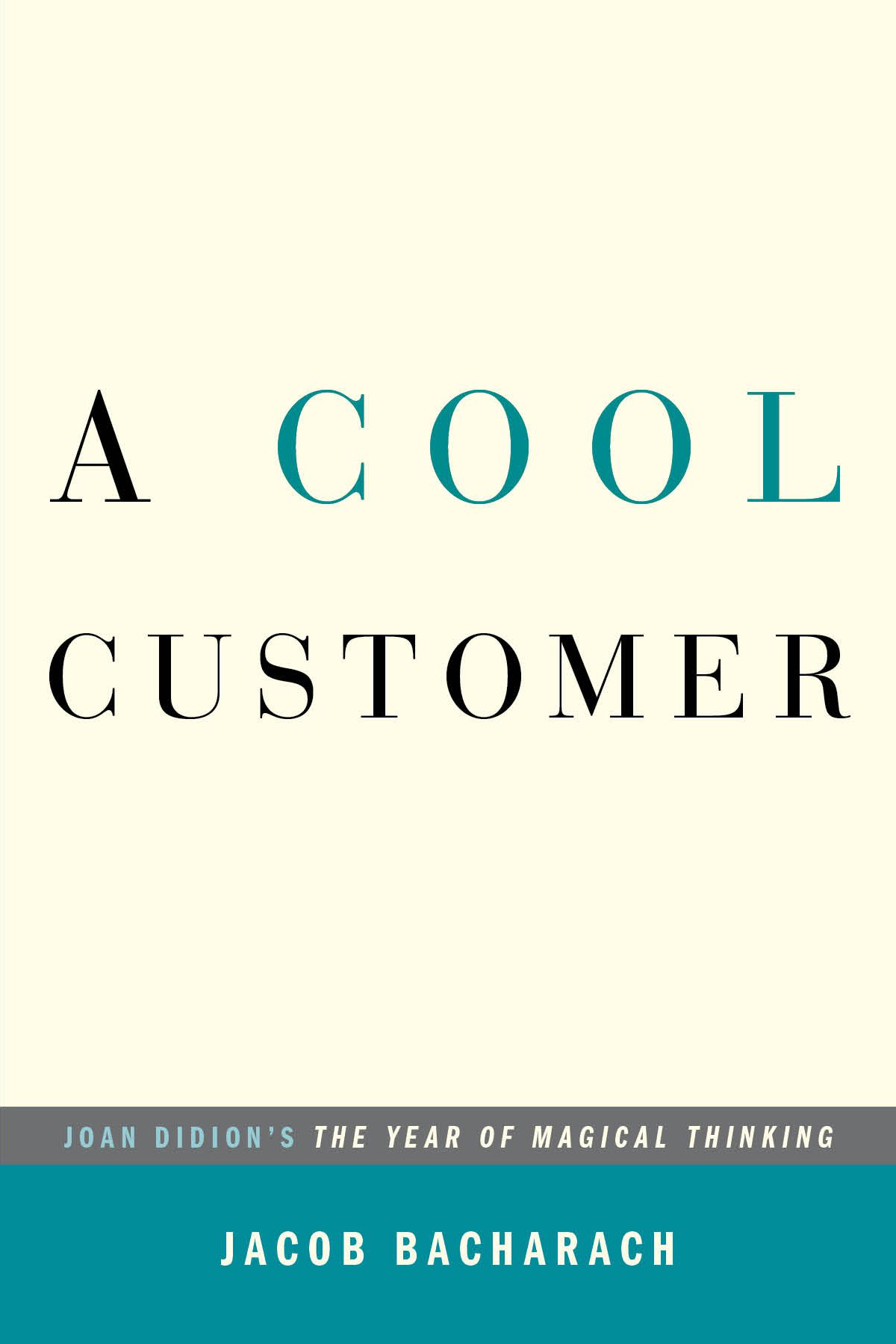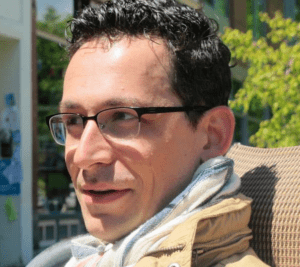…AFTERWORDS is a new series of distinctive commentaries on great works of contemporary literature from our friends at Fiction Advocate.
Like a spirited conversation with a new friend, …AFTERWORDS draw you deeper into the books you love by sharing an acclaimed writer’s personal experience with the text: from border politics to gentrification, from grieving to coming out of the closet. Portable and collectible, with covers that echo the books they’re about, …AFTERWORDS are a living library of the ways literature affects us.
Below are exclusive excerpts from the first three books in the …AFTERWORDS series: An Oasis of Horror in a Desert of Boredom by Jonathan Russell Clark, A Little in Love with Everyone by Genevieve Hudson, and A Cool Customer by Jacob Bacharach. All excerpts are reprinted with permission from Fiction Advocate.
***
The Dirt Below Us
Jonathan Russell Clark
People in New York sleep on the subways. Not only the down-and-out and destitute, for whom the shiny, McDonald’s-playground-colored benches offer brief respite from the elements—no, very ordinary people in New York catch some shuteye as a matter of routine, barreling on tubular machines through tunnels below the ground. They’re not merely taking the trains; they’re living there, too.
I began to notice this in the winter of 2008, when I was staying in Brooklyn with an old friend of mine. As a visitor to the city, traversing the disparate geographies of friends and events, I spent more time getting to than being at. Privately, this pleased me. I love taking the subway. Not in some touristy way, to marvel at the wonder of it all (I lived in Boston and rode trains all the time), but for the comfort. I read on the subway. The subway is probably my favorite place to read in the world. The gentle movement of the car subdues my anxiety (which is constant) and the clack-clack of its clamorous progress manages to overpower even the most vocal passengers. During particularly busy times, I have devoured entire books while riding the train—it was the only time I had.
So in New York, where it’s bigger and more intimidating and my anxiety’s fucking crazy, the subway offers a nice reprieve, a few minutes—between glances at approaching stations and bumps from standing passengers—to disappear within the madness. In 2008 I was reading Roberto Bolaño’s massive novel 2666, and I had reached Part 4, “The Part About the Crimes.” The first three sections had a plot and some kind of narrative momentum, even if I wasn’t sure how they connected. But Part 4 seemed like nothing more than an endless series of descriptions of murdered women in a Mexican city, like this one:
Midway through February, in an alley in the center of the city, some garbagemen found another dead woman. She was about thirty and dressed in a black skirt and low-cut white blouse. She had been stabbed to death, although contusions from multiple blows were visible about her face and abdomen. In her purse was a ticket for the nine a.m. bus to Tucson, a bus she would never catch. Also found were a lipstick, powder, eyeliner, Kleenex, a half-empty pack of cigarettes, and a package of condoms. There was no passport or appointment book or anything that might identify her. Nor was she carrying a lighter or matches.
They read like coroner’s reports. Bolaño relentlessly catalogues each and every grisly murder, all of women, all in St. Teresa, a fictional stand-in for Ciudad Juárez. Clearly something sinister and horrific was happening to the poor women of this city, but this part of the novel baffled and bewildered me at first. I completely understood what I was being told, but I didn’t understand why I was being told it.
As the pages turned and the corpses piled up, I slowly began to see the portrait of St. Teresa Bolaño had painted, how he had insinuated, intimated, suggested all its elements, exclusively through droll and seemingly agenda-less language, and how this grim perspective, coupled with Bolaño’s patience in supplying it, creates not only a three-dimensional picture of a complex metropolis but also one filtered through, and thus forever defined by, the incidents in the foreground. Bolaño subtly forces the reader to equate St. Teresa with unsolved monstrosities, which animates the city into grotesque and foreboding life, emboldened and empowered by the menacing synecdoche of what seems to be a conspiracy of serial murderers.
In the dim, intermittently flashing lights of New York’s subways, the drowsy riders with the clash of economies written on their ambivalent faces and the whole underground, underbelly vibe of it all—the woman in her mid-twenties, leaning her hooded head on her crossed forearms, the old man in a suit resting his head on the back of the seat, his face craned toward the roof of the train car, the sky—these images, I realized, had become synecdoches, a cross-section of citizens coursing through the city like blood, a banal, everyday occurrence that somehow captures New York more honestly than skylines or celebrities or the grandiloquence of Gershwin. Like the murders in St. Teresa—a subject I’m sure no one would want associated with their hometown—New Yorkers’ daily commute, in all its tired misery and claustrophobic density, has greater truth and representative utility than I’d ever realized. The dirt below us, after all, is where we grow from.
If we pay attention, the places we live will reveal their contours, will unearth what exists below the surface, will challenge us to see the underbelly as a part of the whole. By providing this bewildering multiplicity of perspectives, cities teach us how to live in them. To live in New York, you also have to live on the subway. To live in St. Teresa, on the other hand, involves something much darker and more unambiguously sinister. To live in the world of 2666 means accepting things in the narrative that we might never accept in life. This quality—the novel’s resistance to our real-world expectations—makes 2666 both wildly inventive and hyper-realistic.
Bolaño quotes Baudelaire in an epigraph: “An oasis of horror in a desert of boredom.” How can an oasis be a horror? And doesn’t a desert connote something more fatal than boredom? Can horror be a refuge from boredom? What kind of fucked-up world is this?
Jonathan Russell Clark is a contributing editor at Literary Hub and a regular contributor to the New York Times Book Review and Read It Forward. His work has also appeared in Tin House, the Atlantic, the San Francisco Chronicle, The Millions, Rolling Stone, and Los Angeles Review of Books.
Excerpted from An Oasis of Horror in a Desert of Boredom by Jonathan Russell Clark. Copyright © 2018 by Jonathan Russell Clark. Reprinted by permission courtesy of Fiction Advocate.
***
What Gets to Last
Genevieve Hudson
One of the most dazzling rooms in the Bechdel house was Bruce’s library. Bechdel shows us the Don Quixote statue, the “leather-topped mahogany desk,” the “Canterbury atlas rack,” and the towering “walnut bookcase” that decorated the space, perhaps to illustrate how her father went to great lengths to set the tone of the room. Bruce took his library seriously, which is fitting, because he adored his books. He was especially influenced by Modernist authors, and Fun Home’s chapter titles are all drawn from that literary movement. References to Camus, Proust, Oscar Wilde, Fitzgerald, Wallace Stevens, and of course James Joyce, who was Bruce’s favorite writer, are laced throughout the memoir. It is easy to read this intertextuality as an homage to Bruce.
“Books—the ones assigned for my English class—continued to serve as our currency,” writes Bechdel about the time after she left for college. Books assumed an intimate, if not central point of contact between father and daughter.66 He would lend her novels and engage her in long phone conversations about the books she was reading at university. Panels portray Bechdel, her eyes cast toward the ceiling in boredom, leaning back in a chair in her dorm hallway, as she listens to her father say that she’d better identify with “every damn page” of A Portrait of the Artist as a Young Man, while her dorm mates breeze by, tennis rackets in hand. Bruce taught a Rites of Passage course in high school, and he continued to introduce his daughter to the literary greats while also living vicariously through her intellectual awakening.
“I wondered if you knew what you were doing when you gave me that Colette book?” Bechdel asks Bruce after she begins reading his latest recommendation, Earthly Paradise, which elaborates on Parisian life in the ’20s and alludes to lesbianism.
“What?” Bruce replies. Then: “Oh. I didn’t really. It was just a guess. I guess there was some kind of… identification.”
Fun Home is a conversation about other texts, a living archive of the books that influenced Alison and Bruce. But there’s something curious about the kind of associations Bechdel makes. She does not stick to one genre or one movement. She places lesbian pulp, comic books, feminist poetry, canonical Modernist texts, and Greek mythology side by side, as if there were no difference or hierarchy.
*
While reading Michelle K. Yost’s writing, I began to think more about what it meant for Bechdel to juxtapose these texts. Yost points out that the many references to Modernism within Fun Home are Bechdel’s way of “comparing her work to theirs,” and “adding herself to the cannon.” Yost also writes that by placing Fun Home “in such esteemed company and daring readers to flex their intellectual muscles,” Bechdel is “acting to legitimize the graphic novel.”
I agree with Yost that Bechdel’s references to Modernist authors create a kind of “spiritual” association with her own memoir. And I think Bechdel is asking us to reconsider the other literature, too—those lesbian feminist texts that she archives in the pages of Fun Home.
A Portrait of the Artist as a Young Man and Ulysses will not disappear from history. They will continue to be assigned. Essays and book reports about them will continue to be written. Readers will continue to pine over their sentences. A comic by a lesbian cartoonist however, or lesbian pulp fiction from the ’50s—well, there’s no guarantee those books will ever enter the archive. Maybe what Bechdel is doing through her collaging of the “low culture” of comics and feminist fiction with the “high culture” of canonical novels is giving a kind of metaphorical finger to the literary hierarchy. It’s less that she is legitimizing her own work and more that she is disrupting a supposed high order of art.
Judith Thurman, who profiled Bechdel for the New Yorker, refers to this hierarchy when she writes that the comic book genre is a historically “raunchy” one. Thurman suggests that Bechdel’s impulse as a cartoonist, as a kind of cultural outlaw, is to create a collision between high and low culture. “Each of her memoirs is a ‘bad’ book, with pictures of its author doing egregious things, embedded in a ‘good’ book—a work of literature.” 69 Bechdel is not only drawing connections to the literary canon, but also smashing through the formal barriers that hold the canon apart. She is filing lesbian comics next to great literature so that they will sit side-by-side in her own queered archive.
*
Queer experiences have largely been overlooked by mainstream narratives, so it is up to us to save our stories. It is up to us to figure out how to hand them down to history. We tell our stories by drawing, singing, writing, filming, and fucking, and there is something tender and fierce about the community that grows out of that. Just as Bruce would gaze with pride at his walnut bookshelf, we can gaze at our stories, sitting beside each other. By expanding access to an archive of queer possibility, we can broaden our understanding of what a person can be.
What I’m trying to get at is that there is something significant and shared about being queer. There’s a kind of education in queerness you don’t need a formal degree to attain. It is constructed on the stage, in paragraphs, on the stereo, and in the streets. It doesn’t necessarily come to you. You have to find it. Sooner or later, we start searching for our histories. We start to look out as a way to look in. We start to engage with our archive.
Queer archiving is beautifully embodied by places like the online knowledge-sharing platform Transnational Queer Underground, on which people are invited to write about art, culture, and music and share personal stories. In TQU’s own words:
Most of history has been written by white men. What they wrote and the truths they created are what we see reflected in mainstream global politics, media, and discourses today. The way we see our sexuality, how we build families, how we structure our communities, and the power relationships around us, are deeply influenced by how history has been written so far. Let’s try to change that.
I see queer writers as laying the foundation for a contemporary archive of queer art that gives voice to queer experiences, that complicates our idea of language, that demonstrates the need for more. Queer writers provide a platform for our struggle and create a bridge so that more queers can start sewing more stories into the narrative.
As I am talking about representation and queer life and visibility, I feel compelled to acknowledge that the lives Fun Home documents are not representative of all kinds of queerness. Bechdel writes from a specific and privileged perspective—that of a white, middle-class person with access to education, art, and a queer community. And by being unflinchingly specific about her own experiences, I think she expresses something widespread about queer adolescence—about a certain kind of community-making. But her story is not everyone’s story. That’s why it is important that the queer archive become vast—enormous, swelling with new stories, ringing out with new voices, brimming with influences both radical and infinite.
Archives do not need to be static, dusty things. They can evolve and breathe, moving alongside culture, pressing up against belief systems, normativity, stasis. We have the power to be archivists, to imbue something with historical weight. When I see something powerful, I want to preserve its power, make it last.
Together, we can choose what gets to last.
Genevieve Hudson is a writer living in Amsterdam. Her work can be found in Catapult, Tin House online, Vol 1 Brooklyn, Joyland, No Tokens, The Rumpus, Bitch, and other places. Her writing has been supported by the Fulbright Program, Caldera Arts, and the Dickinson House.
Excerpted from A Little in Love with Everyone by Genevieve Hudson. Copyright © 2018 by Genevieve Hudson. Reprinted by permission courtesy of Fiction Advocate.
***
Addiction as Metaphor
Jacob Bacharach
I will not forget the instinctive wisdom of the friend who, every day for those first few weeks, brought me a quart container of scallion-and-ginger congee from Chinatown. Congee I could eat. Congee was all I could eat.
– Joan Didion, The Year of Magical Thinking
Something about Didion’s description of her marriage and her description of its sudden end reminds me of the language we use to talk about addiction. That shouldn’t be surprising. For me, The Year of Magical Thinking is all tied up with my memories of my brother’s death from addiction. Or, it’s more accurate to say, his death from a minor congenital heart defect that might not have been fatal, might never have been detected (or might have been fatal, might have been detected; there is no way to ever know, and to consider it too much is torture) had he not also been a habitual user of a variety of substances which can all have deleterious effects on the functioning of even an otherwise healthy heart.
And in fact it’s fair to say that my whole life has been unusually afflicted by addictions, though not my own. I have no metric to measure “unusually” against. It only feels unusual to me, although I suspect that it’s just a normal human condition to imagine ourselves as either uniquely blessed or uniquely cursed. My best friend—brother aside—has spent his whole life since adolescence careening between a sort of extremely hale wellness and periods of terrific, drug-fueled self-degradation. Other close friends of ours, several of whom are still very close and fortunately, miraculously alive, likewise spent years with needles in their arms. Other friends of theirs, people with whom I had—can I say fortunately? fortunate for whom?—more passing acquaintances, did die of overdoses or of the related common health afflictions of junkies.
My ex-boyfriend—we lived together for seven years altogether, though not uninterruptedly—was an alcoholic. Is an alcoholic? One of the central tenets, maybe the central tenet, of Alcoholics Anonymous and its related twelve-step sobriety programs is that addiction is at once a disease and a state of being. Like cancer, it can go into remission, but it can’t ever be cured. One can be sober, as one can be cancer-free, but one never stops being an alcoholic. Let me, like Didion, quote from the opening pages of a book on the subject:
I want to describe not what it’s really like to emigrate to the kingdom of the ill and to live there, but the punitive or sentimental fantasies concocted about that situation; not real geography but stereotypes of national character. My subject is not physical illness itself but the uses of illness as a figure or metaphor. My point is that illness is not a metaphor, and that the most truthful way of regarding illness—and the healthiest way of being ill—is one most purified of, most resistant to, metaphoric thinking. Yet it is hardly possible to take up one’s residence in the kingdom of the ill unprejudiced by the lurid metaphors with which it has been landscaped.
I don’t suppose the irony of her own metaphors escaped Sontag when she wrote Illness as Metaphor. Emigrate to the kingdom of the ill and all. In any case, it’s telling that the confused jargon that once surrounded cancer (and still does, though to a much lessened degree) continues to surround addiction. After all, we “battle” addiction. We blame it on failures of will and foibles of psychology. We don’t mention it in the obituaries. “He was with us too briefly,” I wrote in my brother’s obit. I am, in fact, open when people ask how he died. “He struggled with addiction.” Struggled. That is perhaps also a euphemism.
It isn’t, however, how he died. It is, maybe, why, at least in a small, proximate sense. How he died is alone in a motel room in Uniontown, PA, full of pills that made his faulty heart stop working. He had been in rehab, then out of rehab. He’d shown signs of recovery whose glow couldn’t dispel the fog of countering evidence. He remained cagey, haughty about his problems. He treated his therapist as he’d treated teachers in high school, when he was a mediocre student at best whose charmed instructors never failed to give him one letter grade better than he probably deserved. Regrettably it worked; his therapist was, like everyone who ever met him, infected, if I can use that metaphor, by his charms. He wouldn’t go to group sessions beyond a few early, desultory, mandatory attendances. He knew that he wasn’t like those people, those losers, the unemployed, pitiable half-people without lives or friends, nothing like him.
I’m not sure Nathan could have survived the realization that they were people exactly like him. (The conditional tone of that sentence is probably wrong. He did not, at last, survive it.) If we thought of him as a boy, then it was to our discredit; he wasn’t. He was twenty-six years old. He was a man, although he was a man who no longer had a job or a fixed residence besides his parents’ house or a girlfriend or any friends other than the drug friends who are the inevitable consequence of a shared affinity for the same high. It was inevitable, in retrospect, that he would go into a quick decline. It was inevitable that he would steal from my parents. It was inevitable that, having exhausted every other option, we would try—this is also AA or Al-Anon cant—to “separate with love.” It was inevitable that when, after exhausting months of dealing with him, Mom and Dad and I would decide to take a vacation together to the Outer Banks, where we’d gone every summer when Nate and I were kids.
Didion writes, apropos Quintana’s second extended hospital stay:
One thing I noticed during the course of those weeks at UCLA was that many people I knew, whether from New York or in California or in other places, shared a habit of mind usually credited to the very successful. They believed absolutely in their own management skills. They believed absolutely in the power of the telephone numbers they had at their fingertips, the right doctor, the major donor, the person who could facilitate a favor at State or Justice. The management skills of these people were in fact prodigious. The power of their telephone numbers was in fact unmatched. I had myself for most of my life shared the same core belief in my ability to control events.…Yet I had always at some level apprehended, because I was born fearful, that some events in life would remain beyond my ability to control or manage them. Some events would just happen. This was one of those events. You sit down to dinner and life as you know it ends.
I recognize my family in this passage. We were maybe more local. I might substitute a DA or a chief of police for State and Justice. We did know a lot of doctors. We were a professional and well-to-do family. We knew attorneys, business owners, psychologists, politicians. Dad could drive to Harrisburg and get a meeting with the speaker, maybe even the governor. It was probably inevitable that, around the time we got to the outskirts of DC, we got a call from my parents’ neighbor, Dave. The alarm was going off at the house. Someone had tried to pry open one of the back windows. Who else could it have been but my brother, tired of crashing on the couches of not-really-friends, figuring he could slip in and lie low in the comfort of the four-bedroom colonial where he grew up? We drove back.
It was early summer, and I can remember sweating as Dave and my Dad and I put plywood over the window until a new one could be ordered and the contractor could come out to install it. It was zucchini season, and Bill showed us a grotesquely large one that had ballooned all out of ordinary proportion after a recent rain. I gardened too, back in Pittsburgh, and I said, “Man, yours is even bigger than mine.” And Dave raised an eyebrow and said, “Well, I don’t like to compare.” The phrase is gallows humor, although they never tell you who is on the way to the gallows.
I was still talking to my brother intermittently. I asked him if it had been him. He denied it. He may have been living with a woman at the time, another pill and heroin user, but that soured, or else it passed in the way that friendships of shared convenience usually do. He hadn’t worked in quite a while and was totally broke. He tried to forge my name and my dad’s name on checks and to cash them at payday lenders—he actually succeeded a couple of times, and we managed it. We knew the right people. Then he was living in his car. Then, briefly, a rapprochement. Some contrition. A few phone calls. A few promises to change. And we thought, maybe this is rock bottom. That’s also an AA term. My ex used it, and if I was skeptical of AA, it seemed to work for him, so maybe he had some insight, and maybe it would work for Nate.
My dad was as yet too skeptical and suspicious to let Nate move back into their house, but, as an intermediate step, arranged for him to stay at a little motel in town. It was July. It would be his birthday, and we made plans for a family dinner. I hadn’t talked to him since the checks, but I talked to him then, and I had never heard him more excited about anything. The thing to understand is that we had been a very close family. We ate together all the time. There shouldn’t have been anything special about it. There should have been no reason to be excited. Then Dad called me at work and told me he was gone. The people at the motel had suspected something was wrong. He’d driven over to the motel himself. They’d been unable to break open the door and had to wait for the police.
“Police are trying to figure out what happened to a man who was found dead in a motel room in Uniontown,” WPXI, the local news station, reported. “Police said Nathan Bacharach, 26, was found dead at about noon on Thursday at the Heritage Inn.
“Police said Bacharach was locked inside the room. Police broke down the door of the room, where officers found him dead.”
I’ve always wondered, but been too uncomfortable to ask anyone, even my own father, how it could have been that the people who ran the motel didn’t have an extra key.
My recollections of what any of us did in the days immediately following are “mudgy,” as Quintana called her memories of the days when she was most ill, the word Didon adopted to describe her memories of a large part of the year after Dunne died. But I can recall with real clarity the sensation—I have never experienced it before or since, of being acutely not hungry for days at a time. In Blue Nights, Didion recalls the day Quintana was born, which was the same day she and Dunne were able to adopt her:
After we left St. John’s that night, we stopped in Beverly Hills to tell John’s brother Nick and his wife, Lenny. Lenny offered to meet me at Saks in the morning to buy a layette. She was taking ice from a crystal bucket, making celebratory drinks. Making celebratory drinks was what we did in our family to mark any unusual, or for that matter any usual, occasion. In retrospect, we all drank more than we needed to drink but this did not occur to any of us in 1961. Only when I read my early fiction, in which someone was always downstairs making a drink and singing “Big Noise blew in from Winnetka,” did I realize how much we all drank and how little thought we gave to it.
The Bacharachs enjoy their drinks as well, but mostly we were—not just Mom and Dad and I, but the grandparents and aunts and uncles and cousins—a family that ate. Someone was always putting out cheese and olives; Uncle Danny was always bringing peppers or stuffed mushrooms; Lena always had candy and cold cuts; Marty baked. After Fritz died, it felt like we all ate for days. I’d always been a skinny kid with a big appetite—even into adulthood, I ate like a teenager—and so the sensation not of being full but of being completely uninterested in food, of finding the idea of taking even one bite of anything almost repulsive, almost nauseous, stayed with me. Even when I was sick, I could eat. So I sympathize with Didion, who could only eat congee after her husband died. I know how she felt.
Interestingly, loss of appetite is also one of the acute symptoms of opiate withdrawal, both a stand-alone symptom as well as a consequence of the attendant symptom of extreme nausea. In fact, many of the physical and psychological conditions of withdrawal and grief are markedly similar: the physical dislocation, the weakness, the confusion, the paranoia and fear. Likewise, Didion’s description of marriage bears a startling similarity to many depictions of addiction, whose synonym, after all, is dependency. I’ll confess that I am deeply skeptical of much of the modern pathology and pseudopathology of drug and alcohol addiction, because it seems to me that there is something deeper and more universally human at work. Like a cancer represents not so much a disease like a cold or flu but a corruption of cells’ own mechanisms for renewing themselves, so too does an addiction represent something ordinary and human grown out of control.
Jacob Bacharach is the author of The Bend of the World and The Doorposts of Your House and on Your Gates. His writing has appeared in The New Republic and the Pittsburgh Post-Gazette. He lives in Pittsburgh, Pennsylvania.
Excerpted from A Cool Customer by Jacob Bacharach. Copyright © 2018 by Jacob Bacharach. Reprinted by permission courtesy of Fiction Advocate.










